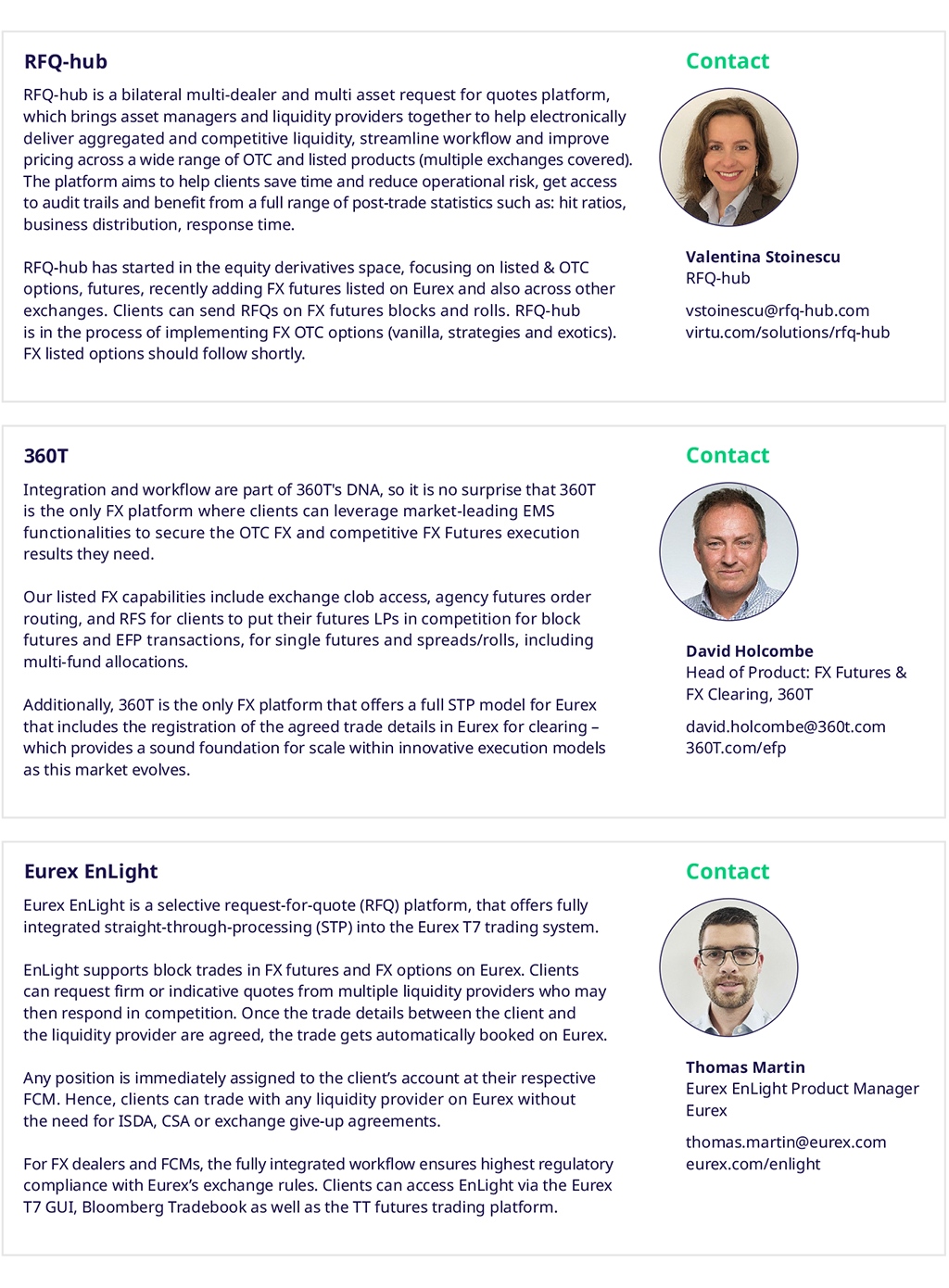Nov 06, 2024
Eurex | Eurex Clearing
Driving the electronification of FX futures
This is the fourth in a series of articles outlining current views on FX futures. Subscribe to FX News to receive upcoming articles and updates!
The FX derivatives market’s structure currently consists of two highly electronified spaces, with a manual bridge that transfers flow between the two.
In the larger OTC market, which dictates norms throughout the FX derivatives ecosystem, swaps and forwards are executed bilaterally. This model is firmly entrenched in firms’ working patterns and not a feature that many are willing to move away from, given the strength of their dealer relationships and embedded workflows.
This bilateral trading structure has moved in tandem with the electronification of the OTC FX market, a process that began in the early 2000s. Present-day OTC FX users trade bilaterally on highly electronified single and multi-dealer electronic platforms. This has created an expectation, not just that current execution models will be maintained, but that market participants will be able to interact with sophisticated electronic platforms when they trade any FX derivative.
Consequently, market participants expect the same level of electronification when trading FX futures on exchanges as they do on OTC platforms. While exchanges naturally offer highly automated workflows through execution in their central limit order books (CLOBs), they are now striving to provide an equally automated trading experience in their bilateral trading models, such as block trades and Exchange for Physicals (EFPs). This shift aims to ensure that the seamless, efficient trading experience that participants have come to expect in the OTC market is mirrored in the exchange-traded environment.
Electronic transition
Both block trades and EFPs are taking on an increasingly important role in FX derivatives, as conduits for OTC to listed flow. Their appeal lies in the preservation of the bilateral trading relationships that OTC market participants prize, while also offering access to OTC FX liquidity when working FX futures positions. At the same time, both execution models allow OTC FX users to unlock clearing benefits such as reduced counterparty risk, operational savings and multilateral netting. These are all achieved without overhauling the existing workflows that serve them well.
As more market participants use block trades and EFPs, so the need for electronification in these areas is growing. The market is already adapting to these shifts and the borders between OTC and listed products are beginning to fade. This integration is primarily happening on two fronts.
First, is the integration of FX futures onto the single-dealer platforms where dealers trade FX swaps and forwards with their clients. These are mature platforms that offer electronic pricing and risk management as a given. Major FX dealers are now adding electronic block and EFP capacities to these technology stacks.
However, multi-dealer platforms are also driving the transition, bringing their expertise in the electronification of other markets to bear on FX. Firms that use multi-dealer platforms for OTC FX transactions can already access functions such as auto-hedging, algorithmic execution and credit line management. Moves are now afoot to bring features such as end-to-end processing and a competitive quoting mechanism to block trades and EFPs. Momentum is not just coming from OTC FX multi-dealer platforms, but venues that grew serving listed markets too. A future of seamless transition between OTC and listed FX is fast approaching.
How Eurex is supporting this development
Eurex’s ambition is to establish a market structure for listed FX derivatives that fully acknowledges the bilateral dynamics of OTC markets. To achieve this, we have introduced a dedicated offering designed for the bilateral trading of FX futures, which operates independently of the CLOB.
Eurex is driving the electronification of FX futures. Our listed FX derivatives are currently available through the following platforms: 360T, RFQ-hub, and Eurex EnLight.

This is the fourth in a series of articles outlining current views on FX futures. Subscribe to FX News to receive upcoming articles and updates!
Don't want to miss updates on Eurex FX?
Subscribe to our newsletter on FX highlights, product launches and extensions, as well as news on events and recommended reads.
